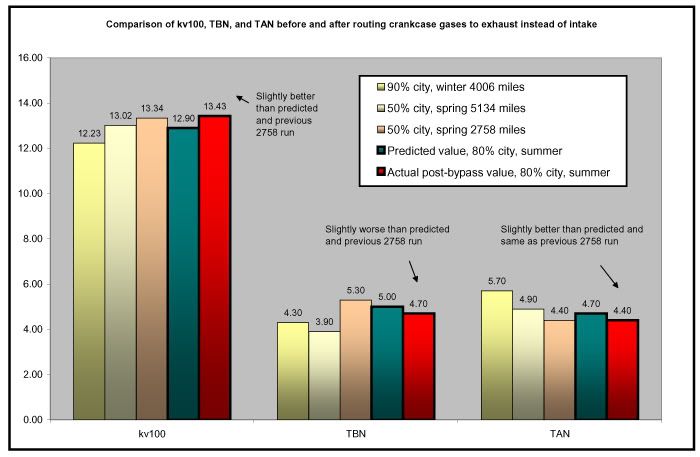Here are the results of a UOA done at 2711 miles after installing the pcv bypass. The question I was trying to answer is whether bypassing pcv and routing to exhaust, instead of to the intake, would have any positive or negative effect on the oil. It looks like it doesn't. That means that the bypass system is likely allowing adequate crankcase evacuation based on no negative effect on the oil. The full UOA is posted in the UOA section.
The red bars below are the post-bypass run. The pink bars are the pre-bypass run. The blue bars are what I predicted a non-bypassed run would be based on % city driving. In other words, any red bars higher than the blue are better than expected. Any red bars higher than the pink are better than a same mileage run that had easier usage (except for TAN of course where lower is better).

The red bars below are the post-bypass run. The pink bars are the pre-bypass run. The blue bars are what I predicted a non-bypassed run would be based on % city driving. In other words, any red bars higher than the blue are better than expected. Any red bars higher than the pink are better than a same mileage run that had easier usage (except for TAN of course where lower is better).

